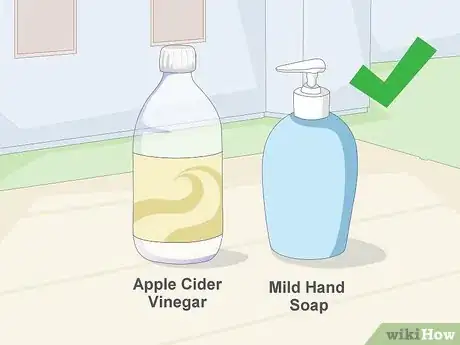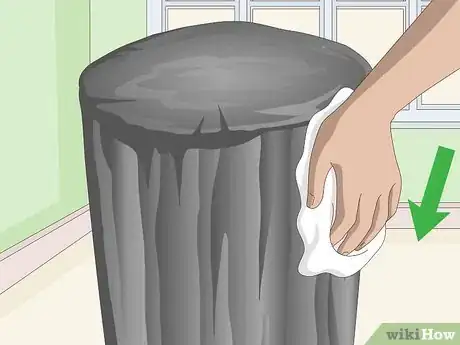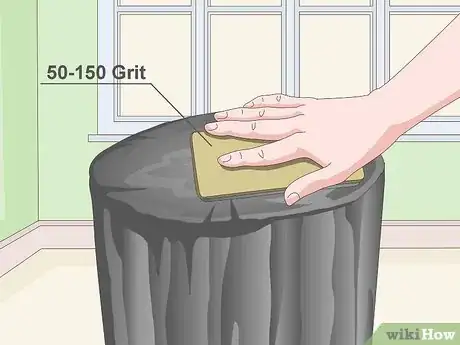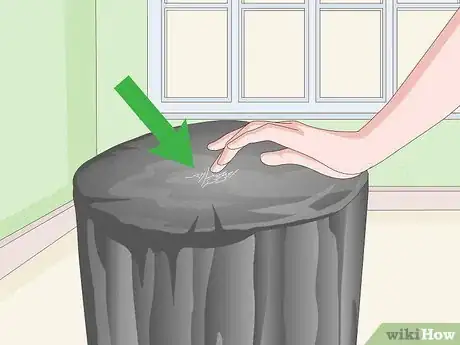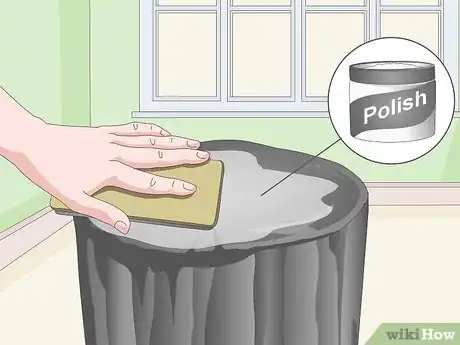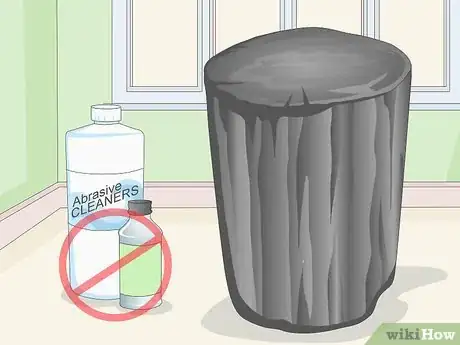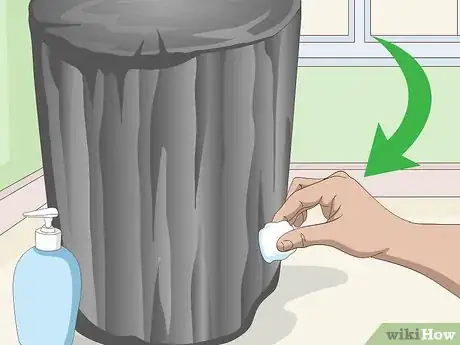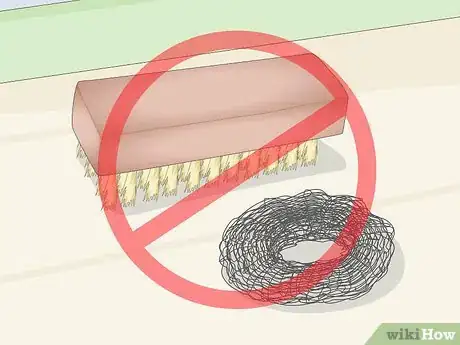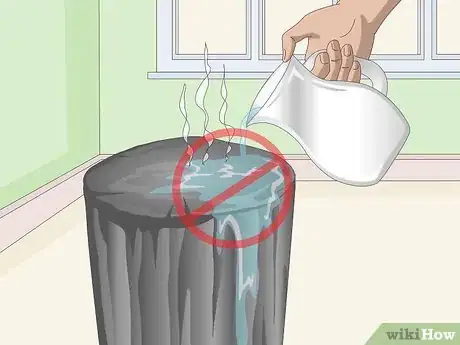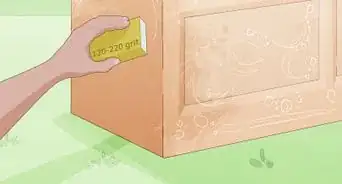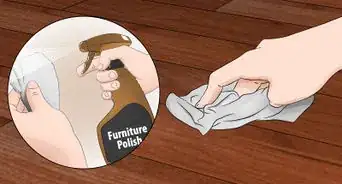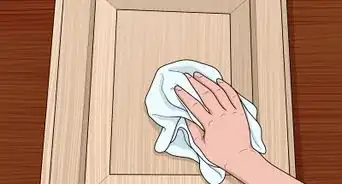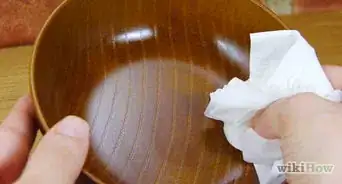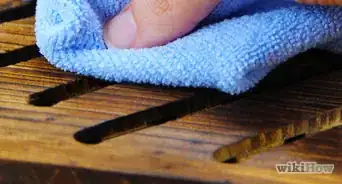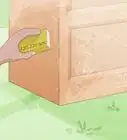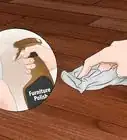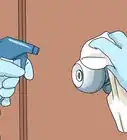X
This article was co-authored by wikiHow Staff. Our trained team of editors and researchers validate articles for accuracy and comprehensiveness. wikiHow's Content Management Team carefully monitors the work from our editorial staff to ensure that each article is backed by trusted research and meets our high quality standards.
This article has been viewed 47,165 times.
Learn more...
Petrified wood requires cleaning to preserve it over time. As petrified wood is somewhat fragile, harsh cleaning is not recommended. A mild or natural cleaner should be used on petrified wood to remove any dirt and debris. Afterward, polish the petrified wood to remove any scratches.
Steps
Method 1
Method 1 of 3:
Removing Dirt and Stains
-
1Choose a mild or natural cleaner. Petrified wood should never be cleaned with chemicals. When cleaning petrified wood, opt for a mild cleanser or a natural one. Mild hand soaps and apple cider vinegar are good options to clean petrified wood. These should be enough to remove dirt and grime from your wood and leave it looking clean and fresh.[1]
- If your wood is not very dirty, opt for warm water alone.
- In rare cases, when stains are heavily set-in a pH-neutral all-purpose cleaner is appropriate for petrified wood.
-
2Select a soft cloth. Petrified wood should be cleaned with a softer cloth. Soft jerseys or microfiber cloths are your best option for petrified wood. Stay away from any pads more abrasive than this to help preserve the wood.Advertisement
-
3Wipe down your wood. Cleaning petrified wood is simple. Gently rub down your wood with your pad and a small amount of your chosen cleaner. Wipe off any dirt and debris that's stuck to the wood to leave it clean and shiny.
- Use only warm water if you clean your wood regularly and it's not very dirty. The less products you use on petrified wood, the better.
Advertisement
Method 2
Method 2 of 3:
Polishing Your Petrified Wood
-
1Use stronger grit pads to smooth down the wood's surface. To start polishing your petrified wood, you need to remove any scratches from the wood's surface. Start with stronger grit pads of 50, 120, or 150. You can purchase these at a hardware store. Rub down the wood gently, targeting any scratches or uneven portions. Make sure to rub out any uneven areas, as this will leave your wood looking shinier and softer when you're done.
- Make sure you have a good grasp on the wood when you're sanding it. If you have a clamping device, use that to secure the wood.
-
2Check the surface carefully for scratches. Wipe off any residue from the wood after sanding it. Examine the wood very closely for any lingering scratches or rough patches. Use your grit paper to remove any scratches you missed the first time around.
- It helps to work in a room with good lighting so you can easily see any scratches.
-
3Add polish with a finer grit pad. Use a finer grit pad to add polish to your wood. Opt for a pad of 400, 800, 1800, or 3500 grit. The higher the number, the more luster you'll add to your wood. Gently rub down the wood with your finer grit pad until the wood is at your desired level of shininess.
- If you want very shiny petrified wood, you can use a grit pad of 8500. This is an extremely fine grit pad and will result in very shiny wood.
Advertisement
Method 3
Method 3 of 3:
Avoiding Common Mistakes
-
1Do not use harsh products on petrified wood. Never use chemical cleaners on petrified wood. Petrified wood is very fragile. It should usually be cleaned with warm water alone. If you need a cleaning product, use something extremely mild only in small amounts.[2]
-
2Test products on small areas first. Even mild cleaning products may harm petrified wood. Before applying your product all over your wood, test it on a small portion of the wood. See if it causes any damage before applying the product all over your wood.
-
3Do not use abrasive brushes. Abrasive brushes should never be used on petrified wood. Use soft cloths only to clean your wood. Things like scrub pads or steel wool should never be used to buff out stains.
-
4Avoid hot water. Make sure the water you use to clean your wood is lukewarm only. Hot water can damage petrified wood. If your water is hot to the touch, it is too hot to use on petrified wood.
Advertisement
Community Q&A
-
QuestionCan petrified wood stay outside without being damaged?
 Community AnswerWeather is merciless. Environmental factors are always going to impact your specimen, so you won't be able to leave it out without some amount of damage occurring over time.
Community AnswerWeather is merciless. Environmental factors are always going to impact your specimen, so you won't be able to leave it out without some amount of damage occurring over time.
Advertisement
References
About This Article
Advertisement
